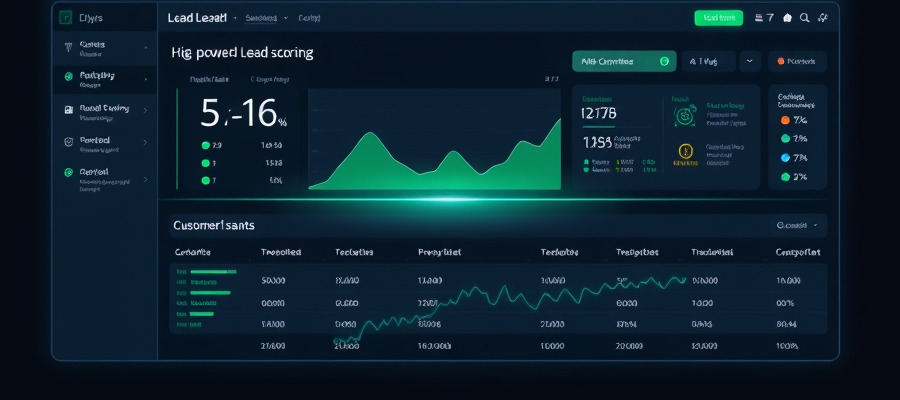Sales Automation: Close More Deals with Less Effort
Learn how sales automation boosts efficiency and converts leads. Discover key strategies and tools to transform your sales process and achieve remarkable results.

Sales Automation: Close More Deals with Less Effort
In the fast-paced world of sales, efficiency is key. Sales automation is no longer a luxury; it’s a necessity for businesses aiming to thrive. By streamlining repetitive tasks and focusing on high-impact activities, sales teams can significantly improve their performance and close more deals. This comprehensive guide explores the benefits of sales automation, the best techniques, and how you can implement them in your sales process.
What is Sales Automation?
Sales automation refers to the use of technology to automate repetitive tasks within the sales cycle. This can include tasks like lead generation, email follow-ups, and data entry, freeing up sales representatives to focus on what they do best: building relationships and closing deals. Effective sales automation tools integrate seamlessly with CRM (Customer Relationship Management) systems providing a holistic view of the sales pipeline.
Benefits of Sales Automation
Implementing sales automation offers several advantages:
- Increased Productivity: Automate repetitive tasks, freeing up sales reps’ time.
- Improved Efficiency: Streamline workflows for faster actions.
- Higher Conversion Rates: Nurture leads more effectively.
- Reduced Costs: Minimize manual labor and human error.
- Better Lead Management: Qualify and follow up with leads efficiently through automated responses.
- Enhanced Data Accuracy: Reduce human error with automated data entry.
- Improved Customer Experience: Provide consistent and timely interactions.
Key Sales Automation Techniques
Here’s how to leverage the power of sales automation:
1. Lead Generation Automation
- Automated Lead Capture: Implement contact forms on your website that directly feed into your CRM.
- Social Media Integration: Use tools to capture leads from social media interactions.
2. Sales Email Automation
- Automated Email Sequences: Set up triggered emails based on lead behavior. Think about welcome emails, onboarding sequences, and follow-up reminders!
- Personalized Email Templates: Create templates that can be personalized with lead information for a more engaging touch.
- Email Tracking: Track email opens, clicks, and replies to measure engagement.
3. Sales Pipeline Automation
- Automated Task Creation: Automate tasks like scheduling follow-up calls, sending proposals based on pipeline stages, and setting reminders.
- Workflow Automation: Automate the movement of leads through your sales pipeline based on defined criteria. This improves lead qualification.
4. Contact Management Automation
- Data Entry Automation: Automatically populate contact information from various sources into your CRM.
- Contact Segmentation: Segment your contacts based on various criteria such as industry, location, purchase history, and behavior.
Choosing the Right Sales Automation Tools
Selecting the right tools is crucial when implementing sales automation. Consider these options:
- CRM Systems: (e.g., Salesforce, HubSpot CRM, Pipedrive). HubSpot offers robust capabilities. Integrate your CRM to create a hub for all your sales activities.
- Email Marketing Software: (e.g., Mailchimp, Sendinblue). Essential for mass email marketing.
- Sales Engagement Platforms: (e.g., Outreach, Salesloft). Offer advanced features like click-to-call and automated follow-up sequences.
- Workflow Automation Tools: Zapier or Make can help integrate different tools and create automated workflows.
Sales Automation Best Practices
- Define Clear Goals: Identify your objectives. Consider goals such as increasing lead generation.
- Segment Your Audience: Tailor your automation efforts based on lead segments.
- Personalize Your Communication: Use personalization tokens in your emails to increase results.
- Test and Optimize: Continuously monitor your results and refine your approach.
- Train Your Team: Ensure your sales team understands how to use the tools effectively.
- Focus on Quality Over Quantity: While automation boosts efforts, prioritize crafting good-quality engagement over automating everything!
Conclusion
Sales automation empowers sales teams to work smarter, not harder. By automating repetitive tasks and focusing on building meaningful customer interactions, you can drive increased sales conversions and grow your business. Start implementing these techniques today and see the remarkable improvements in your sales processes!
Learn more and get in touch to discuss your specific automation needs!



